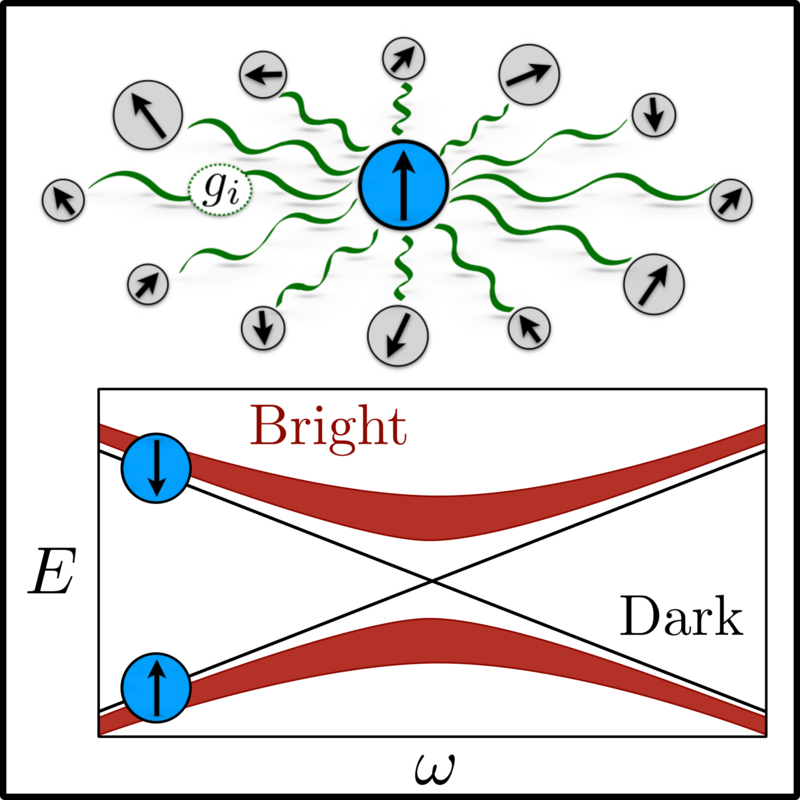Research Highlights
Hidden symmetries in central spin models
Researchers uncover hidden conservation laws and different classes of eigenstates with different entanglement properties in an interacting central spin model.

A schematic representation of a central spin model and its eigenspectrum, which can be divided in bands of bright states and lines of dark states.
Central spin models describe a variety of quantum systems in which a central qubit interacts with a bath of surrounding spins, as realized in quantum dots and defect centers in diamond. While the central spin model with fully isotropic (XXX) interactions has long been known to be integrable, the fully anisotropic (XX) model is here shown to be integrable and hence exactly solvable. Even more remarkable, all eigenstates have a special structure and can be divided into two exponentially large classes: bright states, where the qubit is entangled with the bath, and dark states, where it is not. The bright states arise in pairs and are experimentally accessible by tuning the central magnetic field, while in the dark states the central spin effectively decouples from its environment, leading to various interesting physical phenomena. Furthermore, not only is the model integrable, the special structure of its eigenstates can also be related to a hidden supersymmetry.
Integrability and dark states in an anisotropic central spin model, Tamiro Villazon, Anushya Chandran, Pieter W. Claeys, Phys. Rev. Research 2, 032052(R)